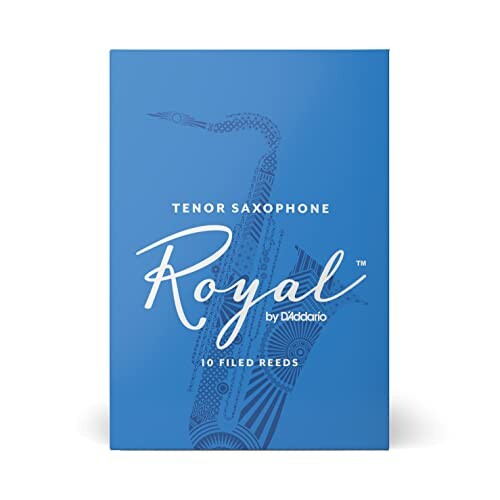
A Beginner’s Guide to Selecting Tenor Saxophone Reeds
Key Takeaways
- The strength of reeds affects tone and playability.
- Reeds come in various materials, with cane being the most popular.
- Understanding tip opening is essential for a better sound experience.
- Experimenting with different brands can help find the right fit.
- Consider your music style when selecting reeds.
Choosing the right reeds for your tenor saxophone can make a significant difference in your playing experience, especially if you are a beginner. This guide will help you understand how different characteristics affect your tone and playability, so you can make informed decisions on selecting the best tenor saxophone reeds.
Understanding Reeds: The Basics
Reeds are essential components of woodwind instruments, including tenor saxophones. They produce sound when air is blown across them, causing them to vibrate. Here's what you need to know:
- Material: The type of material affects the sound quality. Most reeds are made from cane, but synthetic options are also available.
- Strength: Reed strength affects responsiveness and tone. Strength typically ranges from 1 to 5, with higher numbers indicating a thicker reed.
- Tip Opening: The tip opening of your mouthpiece influences your tone. A wider opening allows for a richer sound but may require more air support.
Choosing the Right Strength
Reed strength is crucial for achieving optimal tone and playability. Beginners often choose a strength between 2 and 3, depending on personal preference and comfort level. Below is a general guide:
| Strength | Recommended For | Characteristics |
|---|---|---|
| 1 | Very Beginner | Easy to play, but lacks body. |
| 2 | Beginning Student | Good balance of ease and tone. |
| 2.5 | Intermediate Player | Offers more resistance for fuller sound. |
| 3 | Advanced Player | Requires more air support, provides robust tone. |
Material Matters
Most saxophone reeds are made from cane, but synthetic reeds can also be a great option, especially for beginners. Here’s how they compare:
| Material | Pros | Cons |
|---|---|---|
| Cane | Natural feel, great tone quality, widely used. | Can fracture and wear out quickly, requires maintenance. |
| Synthetic | Durable, consistent quality, ready to play. | Can lack warmth and complexity in tone. |
Top Tenor Saxophone Reeds for Beginners
Here are some excellent options you might consider as a beginner:
D'Addario Woodwinds - Royal Tenor Saxophone Reeds
Ideal for students and advancing players, these reeds provide ease of response and clarity across genres.
Learn MoreIn addition to D'Addario, another highly-rated option is:
Vandoren SM613B T75 Jumbo JAVA Tenor Saxophone Mouthpiece
An ebonite mouthpiece with a 265-micron tip opening that enhances your saxophone experience.
Learn MoreExperimenting and Finding Your Fit
It’s essential to try different brands and strengths until you find the perfect reed. Don’t hesitate to consult more experienced players or your instructor for recommendations.
Caring for Your Reeds
To extend the life of your cane reeds, consider the following care tips:
- Store reeds in a protective case to prevent damage.
- Moisten them before playing to avoid cracking.
- Rotate between multiple reeds to allow each to dry out.
Conclusion
Selecting the right tenor saxophone reeds may seem daunting at first, but with a little understanding of material, strength, and personal preference, you can find the reeds that enhance your playing experience. Remember to invest time in experimentation to discover the best fit for your style and musical preferences.
Tips for Beginners
- Start with a strength of 2 to 2.5 for optimal playability.
- Choose reputable brands for consistent quality.
- Don't be afraid to change brands as your playing evolves.
- Keep an eye on the condition of your reeds and replace them as necessary.

